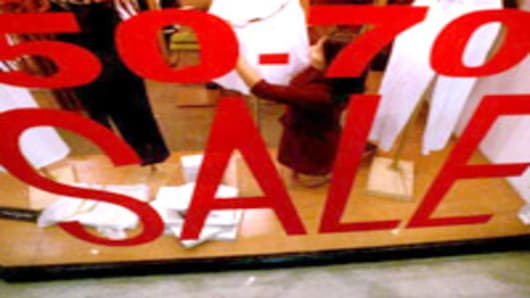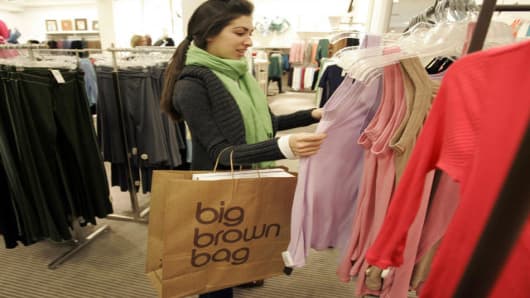Attention shoppers: You are not spending enough to keep the economy afloat and live up to the reputation of the resilient American consumer.
Attention Wall Street: Add the precipitous slowdown in consumer spending to the list of worries and reasons to think a recession is underway or imminent.
If that’s not enough to get your attention, consider that the latest retail sales data show that barring a healthy bounce in September activity, which many consider unlikely, the US economy is going to have its first quarterly decline in consumer spending in 17 years.
Government data Friday showed retail sales fell 0.3 percent in August, while July’s decline was revised downward from 0.1 percent to 0.5 percent. Even more worries, the August decline came despite a sharp drop in gasoline prices and follows up on a weak showing in the second-quarter GDP report.
“The signs were already there, that consumers were playing it very conservative,” says Brian Bethune, chief US financial economist at Global Insight. “It’s definitely showing weakness.”
“The pattern looks very recession like," adds Fact And Opinion Chief Economist Robert Brusca.
Others say the worse may be close to over.
“The slowdown has been widely advertised, so the more notice, the less severe the reaction,"“ says economist Ram Bhagavatula, managing director at the hedge fund Combinatorics Capital. “A good part of the consumer adjustment is behind us.”
A Bounce or Not?
Bhagavatula is among those economists expecting a healthy bounce in September. He’s expecting spending growth of 1.0 and 2.0 percent, thanks partly to back-to-school sales, which were disappointing in August.
Bethune disagrees.
“The back-to school wind never blew and its not a reasonable expectation to think it will pick up,” he says.
Rebound or not, what’s most alarming about the spending downturn is its breadth. Though big-ticket items, such as furniture and appliances, have been down for some time, electronics showed a decline in August. Clothing and general merchandise also fell.
The S&P Retail Index slumped more than the broader market Friday, as did the shares of department store and big-box electronics retailers, such asMacy'sNordstrom andBest Buy , which reports earnings Sept. 16.
Blame Housing
Much of the inherent weakness reflects the housing slump, whether its sales or renovations. The building materials category led declines in August and are down sharply in the past three months.
“House prices hit home,” says Bhagavatula. “The wealth losses are so intense and large.”
Other categories that appeared to get a boost from tax rebate checks of the stimulus plan weakened in August, when the checks stopped arriving. The services category turned negative and the food service and drinking area was almost flat.
“Discretionary spending dried up almost the minute the rebate checks ended," says Normura International Chief Economist David Resler.
Resler says a recent analysis of his shows a close correlation between the rise of gasoline prices and (effective) disposable income between the enactment of the stimulus plan and the arrival of rebate checks, suggesting much of the money was spent at the pump.
Resler expects a decline of 1.0 percent in real consumer spending in the third quarter and is leaning toward a flat or slightly negative reading in the fourth quarter.
Brusca cautions against making much of the jump in the University of Michigan's consumer sentiment index in September, saying "recessions linger after confidence/sentiment bottom and rebound."
And don't forget the old Wall Street saying: Pay attention to what consumers do not what they say.
Even the least pessimistic, though, aren’t expecting much out of the consumer in the next year or so.
“It's going to take a long time to adjust,” says Bhagavatula, who sees an economic contraction in the fourth quarter.




